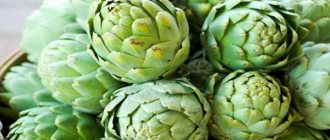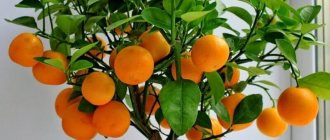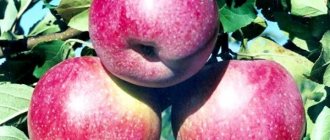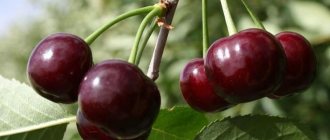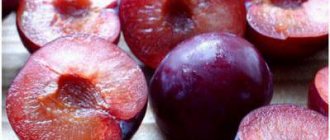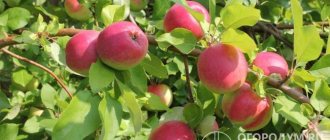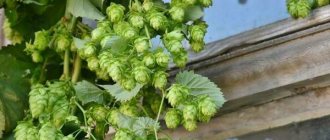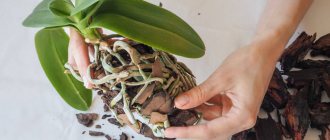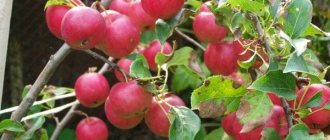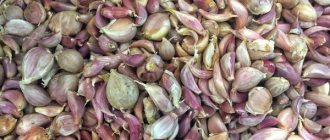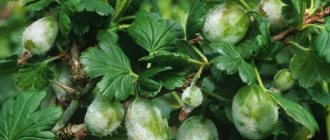Growing a fragrant citrus tree is no more difficult than any other fruit crop. Having learned how to grow tangerines, you can use the advantages of this tree - high immunity, ease of care and good yield will simplify the task for the most inexperienced gardener.
How to grow and care for a new tangerine tree in a pot
Mandarin reproduces both generatively (from seeds) and vegetatively (cuttings and layering). Any tree will bear fruit, but varietal characteristics are preserved only during vegetative propagation.
Planting a seed, including the necessary preparation
Viable seeds are extracted from ordinary store-bought fruit. It is best to purchase them in December - these are the freshest tangerines. Deformed, small, thin, dry, blackened seeds are unlikely to sprout.
Tangerines are planted at home in shallow but wide pots with a diameter of 10 cm or more, since their root system is superficial. But first, plastic cups are also suitable for seeds. The substrate is a special store-bought one for citrus fruits or a mixture of humus with leaf turf and sand (2:2:1).
The soil for tangerine should be fertile, but quite loose; The plant does not tolerate acidic soil
It is advisable to plant the seeds immediately after eating the fruit. If for some reason planting had to be postponed, the seeds are pre-soaked for 2-3 days, wrapped in a damp cloth.
The algorithm of actions is as follows:
- Fill the containers 3/4 full with substrate and water the soil moderately.
- Plant seeds 1–2 pieces at a time, deepening them to 3–4 cm.
- Water moderately again. Ensure a constant temperature of 20–25 °C and air humidity of about 60%. A “greenhouse” is not needed; the germination rate of tangerines is already quite good.
Citrus fruits are characterized by multiple germination of seeds, so one seed can easily produce 2-3 sprouts.
How to care for seedlings
Shoots do not appear simultaneously. The minimum period is 15–18 days, more often it takes about a month. When the seedlings have formed four true leaves, they are planted in individual containers, leaving the most powerful and developed ones, or simply pinch off the weakest sprout at the base of the stem. The substrate is the same; a layer of drainage (2–3 cm) is required at the bottom.
Tangerine seeds have good germination, so, as a rule, there are no problems with obtaining seedlings
Then, before the first fruiting, the plants need annual replanting. Harvesting tangerines are transferred to a new pot less often, once every 2–3 years. With each transplant, the diameter of the pot is increased by 4–6 cm, the root collar is left at the same level. Replant tangerines with a lump of earth on the roots. For old trees whose size does not allow them to be replanted, the top 4–5 cm of soil is changed every spring.
Mandarins are transplanted only by transshipment method
A tangerine tree lives for about 30 years and begins to bear fruit at 4–6 years of age.
Video: growing tangerine from seed
Rooting cuttings
Despite the fact that the rooting of a tangerine, even if planted correctly, has a low chance, many gardeners prefer to propagate the tree using this method. If all the rules are followed, there is a small chance that such a breeding method will be successful.
Note! Mandarin is rooted at a temperature of +24…+26°C.
Obtaining planting material
To grow a tangerine from a branch, it is important to choose suitable planting material. Ready-made tangerine seedlings are not sold in stores, but you can find cuttings for grafting on the shelves.
Suitable planting material has the following characteristics:
- dense, dark, elastic and not dry bark;
- length from 8 to 15 cm;
- the presence of 3 developed buds without peeling;
- no traces of disease.
To get a cutting yourself, you will need an adult tree that has already bear fruit. It must be healthy and free from disease.
Important! Before the procedure, the instrument that will be used to cut the stalk is disinfected: wiped with alcohol or calcined over a fire.
For tangerine cuttings, choose a branch 1 year old. 8-15 cm extend from its top. There should be at least 3 living buds on this segment. The shoot is cut at an angle of 45°. The cut site on the mother tree is treated with garden varnish.
Preparing the cuttings
Before you start growing a houseplant, planting material is prepared. This process includes the following steps:
- All the lower leaves on the cuttings are cut off, leaving 2 to 4 on top. Small leaves are not touched, large ones are cut by half, and small ones by a third.
- A cut of a seedling is soaked for half an hour in a light pink solution of potassium permanganate.
- Stimulate the formation of roots by soaking the lower part of the branch in the Kornevin solution.
If the cutting is not planted immediately after pruning, the cut is renewed at the same angle.
Planting dates and technology
It is recommended to root the seedling in the spring (March or June), when sap flow is active.
To plant a seedling you will need a soil mixture. To prepare it, mix 1 part sand, leaf soil and humus with 2 parts garden soil. The resulting mixture is disinfected in one of the following ways:
- watering with a dark pink solution of potassium permanganate;
- calcination for 30 minutes at a temperature of +100°C;
- watering with a solution prepared from 1 tbsp. l. copper sulfate and 1 bucket of water;
- pouring boiling water.
For 5 kg of the resulting mixture take 25 g of superphosphate, 0.5 tbsp. ash and 15 g of potash fertilizer. All ingredients are mixed.
To grow a tangerine tree from a twig at home, you will need drainage. It is disinfected using the same method as soil.
Plant the cuttings in a cut bottle, plastic cup or special pot. There should be drainage holes at the bottom of the container. Containers are disinfected by soaking in boiling water or a dark pink solution of potassium permanganate.
How to plant a tangerine cutting:
- A layer of drainage is placed at the bottom of the container. The rest of the volume is filled with earth. The soil is moistened with warm water.
- The cuttings are planted in the ground with the cut down. The depth should be such that the seedling can stand without support.
- The soil is moistened abundantly with warm water. The seedling is covered with the cut off upper part of the bottle if it is planted in the lower part of the bottle, or with a film or bag in other cases. This will create a humid tropical microclimate that is optimal for rooting.
Before rooting, the tangerine should be in such a greenhouse. During this time, the seedling is watered daily and sprayed with wet water. The film is removed every day for 15-30 minutes.
The fact that the seedling has taken root will be indicated by swelling and opening buds. Mandarin is replanted no earlier than a month after rooting.
When the tangerine takes root, the duration of ventilation is increased. After some time, the film is removed.
How to increase the chances of rooting
Will a tangerine sprig give roots? In most cases, the cutting does not take root, but dries out. We offer advice from gardeners whose tangerine seedlings have taken root:
- Hybrid tangerines take root better than varietal ones.
- To create a comfortable temperature, place an electric heating pad under the pot with the cutting.
- In order for the cuttings to take root better, the mother tree is not watered before cutting the planting material. It is advisable to dry an adult tangerine for several days. Cuttings cut from a watered plant most often rot.
Caring for decorative tangerine tree
Caring for a tangerine growing at home will not take a lot of time and effort from a gardener. Necessary activities:
- watering - since the soil should not be allowed to dry out, moisten the plant daily or every other day. In hot weather, several waterings per day will be required. Weekly spraying of tangerines is advisable, but make sure that water does not get on the buds, flowers and ovaries;
Mandarin is moisture-loving - this applies to both young seedlings and adult plants
- fertilization - from March to October, tangerine requires fertilizing every two weeks. You can alternate natural organic matter (infusion of fresh manure, chicken droppings, nettle leaves diluted with water) with special fertilizers for citrus fruits. For three weeks before transplantation and two weeks after it, tangerines are not fed;
Special fertilizers for citrus fruits contain macro- and microelements necessary for plants in the required proportions.
- crown formation - when the tree reaches a height of 30-40 cm, all shoots and its top are pinched 1-2 times per season, in the spring and with rapid growth - also in the fall. We must not forget about sanitary pruning.
Crown formation by pruning and pinching
Pinching activates the branching of shoots, this is a necessary condition for fruiting - tangerines ripen only on branches of the 4th–5th order. It takes 3–4 years to form a full crown.
Regular pruning of tangerine to stimulate its branching is a necessary condition for fruiting
Wintering citrus
Flowering and fruiting tangerines require a period of rest. For winter, plants are transferred to a bright, cool (10–12 °C) room. Feeding is stopped from November to February, the intervals between watering are increased to 3-4 days, allowing the soil to dry out 2-3 cm deep.
Flowering and fruiting take a lot of energy from the tangerine - to restore them, the plant requires a period of rest
Video: what care does indoor mandarin require?
Plant health
Indoor mandarin is practically not affected by infections, but suffers from diseases associated with nutritional problems and uncomfortable conditions:
- Chlorosis (yellowing, blanching) of leaves can occur due to a lack of nitrogen or iron, a cramped pot, or insufficient lighting.
- Curling of leaves is due to dry soil.
- Falling of buds, flowers, ovaries - from dry air.
Most often, flower growers complain that tangerines suddenly begin to fall. If a plant's leaves fall off, what should I do?
- see if there are any pests - spider mites, scale insects, aphids, whiteflies; they are fought with laundry soap, garlic infusion or approved insecticides;
- Spray the bushes more often if the air is too dry;
- feed with potassium fertilizer;
- check whether the root collar is buried;
- transplant the plant into a smaller pot if the previous one was too large;
- eliminate drafts and excessive watering; provide enough light.
An exhausted plant can shed its leaves in the autumn. The bush needs rest, and it is placed in a cool (+10 +12 degrees) room from mid-October to mid-February. Watering is reduced. In spring, the tangerine will come to life.
Goodbye, dear gardeners! Good luck to you in developing new fruit crops!
How to make a tangerine growing at home bloom and bear fruit
In order for a tangerine to bloom and bear fruit at home, it needs optimal or close to optimal conditions:
- good lighting (a place near the south, south-east window) and protection from direct sunlight;
- temperature 20–25 °C in summer and autumn, 16–18 °C during flowering;
- the absence of any poisonous plants nearby (mandarin categorically cannot tolerate them);
- non-acidified substrate;
- regular watering and spraying;
- annual (or more often) crown trimming.
Without good lighting, tangerines will neither grow nor bear fruit.
Mandarin branches and leaves tend to reach towards the sun. To ensure that the crown is symmetrical, once every 12–14 days the pot is rotated around its axis by 10–15°.
Stimulating flowering - 2 ways
If the tangerine does not bloom or set fruit, the process should be stimulated. However, this can only be done after the tangerine has passed its winter dormant period.
The first option is what to do:
- Wrap copper wire tightly around the base of the trunk so that it is pressed into the bark. A disrupted sap flow process for a tree means “thoughts” about imminent death and the need to “have offspring.”
To stimulate tangerine flowering, you will have to create an “extreme situation” for the plant.
- After 5–6 months, remove the wire and cover the “wound” with garden varnish.
The method will not have an effect if there are no branches of the 4th–5th order in the crown. Therefore, to force a tangerine to branch, you need to tie the ends of the branches with thin wire, bend them away from the trunk, pulling the top down, and fix them in this position.
The second, less popular option for stimulating fruiting is to make two ring cuts up to 1 mm deep on the trunk and each skeletal branch with a 1 cm interval between them. The resulting ring of bark is removed, turned inside out and placed in place, secured with adhesive tape, tape, or grafting tape.
If these actions do not give the desired effect, try grafting or regrafting the tangerine.
Grafting a cutting
The most successful way of vegetative propagation of tangerine is to graft a cutting onto a lemon or orange rootstock. In this case, the chances that the planting material will take root are high.
It is best to graft a tangerine onto a lemon grown from a seed. This plant is characterized by increased endurance and resistance to negative environmental factors.
Note! Mandarin takes root more slowly than other citrus plants. This process takes up to 2 months.
Preparation of scion and rootstock
An orange or lemon is used as a rootstock. The tree must be at least a year old. Plants that are too mature (over 2 years old) are not suitable for this procedure. They have a separate branch as a rootstock.
The rootstock is watered and fed 3 days before the procedure. 2 months before grafting, the plant is transplanted into a new pot with nutritious soil mixture.
For the scion, they choose last year's branch on a tree that has already bear fruit. It should not show signs of disease or damage. The bark is dense, but not dry.
5-8 cm retreat from the top of the branch. 2-3 living branches should remain on this segment. The required part is cut at an angle of 45°. The cut on the mother plant is smeared with garden varnish.
Tangerine is grafted in March or April. During this period, active sap flow is observed, increasing the chances that the cutting will take root.
Vaccination procedure
The easiest way is to graft the cutting into a cleft. This method is called copulation.
Step-by-step instructions for grafting a tangerine cutting:
- The rootstock (young lemon grown from a seed) is cut by 1/3. Only the trunk without leaves and buds should remain. The cut is made at an angle of 45°.
- A cut is made in the center of the rootstock from top to bottom (split) 1.5-2 cm deep. The cut is made carefully, with a sharp knife, so that the rootstock does not crack.
- All leaves are removed from the scion, leaving the buds. From the cut side, the cutting is ground on both sides at an angle. You should get a thin wedge that matches the length of the split in the scion.
- The scion wedge is inserted into the split on the rootstock to the maximum depth. The sides of the rootstock are widened with a thin blade to push the cutting deeper.
- The junction of the scion and the rootstock is tightly wrapped with a special garden tape or electrical tape. There should be no open areas. It is important not to overtighten the trunk so as not to disrupt sap flow.
- The tree is watered and sprayed abundantly. Place damp cotton wool at the bottom of the pot, which is moistened as needed.
- The grafted tangerine is covered with a bag and put in a place protected from direct sunlight.
The fact that the cuttings have taken root will be indicated by swelling of the buds and the appearance of shoot primordia. After this, the film is removed and the tangerine is moved to the windowsill.
We treat diseases, drive away pests
The best prevention of any diseases and pest attacks is competent agricultural technology. It is also recommended to regularly inspect the plant for the appearance of characteristic symptoms.
Table: pests and diseases attacking tangerines
| Pest | Symptoms of the lesion | Drugs used |
| Spider mite | Small translucent dots on the underside of the leaves, a thin “cobweb” entwining the plant | Neoron, Omite, Apollo, Agravertine (according to instructions) |
| Shchitovka | Grayish-brown “plaques” on the plant, yellow-red tissue around them, sticky transparent coating | Fufanon, Aktara, Karbofos |
| Mealybug | White cotton-like coating in the form of small lumps | Inta-Vir, Decis, Tanrek |
| Aphid | Small greenish-yellow or black-brown insects en masse clinging to the tops of shoots, buds and ovaries | Any broad-spectrum insecticides |
| Anthracnose | Greenish-white, gradually blackening and expanding spots on leaves and fruits | Any fungicides |
| Root rot | Blackened roots, “wet” spots at the base of the trunk, an unpleasant putrid odor from the soil, yellowing and falling leaves | The manifestation of symptoms on the aboveground part of the plant indicates that the process has already gone too far. The tree can only be destroyed |
Photo gallery: visible signs of damage to the tangerine tree by infections and parasites
Spider mites are not insects, so insecticides are useless in the fight against them.
The durable shell of the scale insect reliably protects it from folk remedies - it is better to immediately use insecticides
In particularly advanced cases, a plant infected with a mealybug appears to be covered with a layer of “moving cotton wool”
Aphids are one of the most common pests of indoor plants; tangerines are also affected by them.
To combat anthracnose, if there is less than a month left before harvest, only fungicides of biological origin are used.
It is impossible to notice in time and, as a result, take measures to treat root rot - the disease first affects the underground part of the plant
Worms in tangerines are a kind of “urban legend”. Nobody saw them, but everyone knows someone who definitely did. In general, this is unlikely, because worms do not like high acidity. But if you do come across a wormy specimen, you shouldn’t eat it. The larvae of fruit and berry pests do not pose a danger to humans, which cannot be said about maggot flies.
Worms in tangerines are an extremely rare phenomenon, but still possible
Video: common diseases and pests of citrus fruits
Peculiarities of tangerine reproduction
Mandarin, like other citrus fruits, reproduces by seed and vegetative methods.
Citrus seeds are typically obtained from fruits purchased at grocery stores. But the fruits of seedless hybrids often appear on the shelves. This makes it difficult to obtain planting material.
Most gardeners propagate tangerines vegetatively. Obtaining air layering is a labor-intensive process that is only possible if there is an adult tree suitable for this procedure.
You can get a cutting from a plant that bears fruit. However, rooting a tangerine is difficult. Often, the seedling does not form roots, but experienced gardeners say that successful plantings do occur.
The most common method of propagating tangerine is to graft a cutting onto a lemon or orange rootstock. We are not talking about a lemon tree that will have only one branch with orange fruits.
In this case, the trunk of the mother plant is used, onto which a tangerine cutting is grafted. A plant grafted in this way becomes a full-fledged tangerine.
Leaf fall and other signs of care errors
The appearance of the tree may also be the tangerine’s reaction to errors in care. Carefully analyze your actions.
Table: how errors in caring for tangerines manifest themselves
| What does a tree look like? | Probable Cause |
| Lightened, shrinking leaves | Light deficiency |
| Leaves turning yellow from lower to upper | Nitrogen deficiency |
| Yellowing leaves from young to old | Iron deficiency |
| Massive leaf fall, drying tips | Dry air and/or soil, replanting with deepening of the root collar and/or in an overly large pot |
| Massive loss of foliage for no apparent reason | Potassium deficiency |
| “Wet” spots on the lower leaves and at the base of the trunk | Root rot (develops due to regular waterlogging in combination with low temperature) |
Sometimes the reason for the deterioration in the appearance of a tangerine is not a disease or pest attack, but errors in care
Which branch to choose for rooting?
Rooting cuttings, or cuttings, is one of the main methods of propagating most citrus plants. This method is especially suitable for propagating lemons, citrons, and limes. I don’t see the need to propagate the above species by grafting if their cuttings have good rooting ability. Well, unless Meyer lemon can be grafted onto other roots, in order to save it from Malsecco disease.
A lemon grown from a cutting begins to bear fruit in the 2nd or 3rd year. The New Georgian lemon begins to bear fruit a year or two later than the others. For successful rooting of a lemon cutting, it is necessary to create favorable conditions for this: warm, light and moderately humid.
For cuttings, I try to cut off a well-ripened branch of last year's growth. Young, green or, on the contrary, old, woody cuttings take root very difficult and take a long time, if they take root at all. The thickness of the cut branch should be approximately twice as thin as a pencil. I was unable to root cuttings that were too thick.
So, we got hold of a lemon cutting, and while the place is prepared with the conditions for its successful rooting, I wrap the cutting in a damp cloth, put it in a plastic bag and send it to the fruit compartment of the refrigerator. In this way, in case of urgent need, cuttings can be stored for up to a month. I usually keep them in the refrigerator for about a week. It is believed that such temperature treatment has a beneficial effect on the rooting process. By the way, before sending the branches to the refrigerator, I make sure to inspect them for the presence of pests, and, if there are any, I get rid of them by wiping the cuttings with a damp cotton swab.
Where do tangerines grow in open ground, what are the popular varieties?
The homeland of tangerine is Southeast Asia. Of all citrus fruits, it is considered the most frost-resistant, the critical minimum is –8 °C. Such low cold resistance for Russia, coupled with a long (8–10 months, from February-April to November-December) period of fruit ripening, greatly limits the possibility of cultivating tangerines in open ground.
In Russia, this crop has successfully taken root and is grown on an industrial scale only in the Krasnodar region (surroundings of Sochi, Adler). Attempts to move plantations to Crimea have not yet yielded positive results. The practice of amateur gardeners on the peninsula shows that the tree survives and bears fruit only if it is provided with high-quality shelter for the winter. In the territory of the former USSR, mandarins most like the Georgian and Abkhazian climate.
For gardeners in central Russia and regions with harsher climates, a tangerine tree on the plot is still a pipe dream
Russian gardeners and farmers choose varieties based on their cold resistance:
- Sochi No. 23 - early tangerines, large, sweet, somewhat similar in shape to pears;
- Pioneer 80 - fruits of medium ripening, flattened, sweet and sour;
- Unshiu broadleaf - an early variety, the fruits are large, sweet, flattened, with a pronounced “navel”;
- Kovano-Vase (Kovano Vasyo) is a dwarf tree up to 1.7 m high, fruits with thin skin, very sweet and juicy.
Mandarin Kowano Washo is a very compact tree
In those regions where the climate is suitable for tangerine, it is enough to choose a well-lit place for the seedling, protected from sharp drafts. In Crimea, the trench method of cultivation is practiced, which makes it possible to cover the plantings for the winter. The depth of the trench is 1.5–1.8 m, the width is about 1.5 m, the length depends on the number of trees being planted. They dig it on a slope oriented to the south, southeast.
How to use the trench method:
- The northern end is made vertical, for thermal insulation it is laid out with brick, stone, thick boards, and whitewashed. The southern one, on the contrary, should be sloping (45–50°).
- Drainage is poured onto the bottom with a layer at least 10 cm thick.
- Plant tangerines in a mixture of fertile turf soil and humus (1:1). The plant does not tolerate acidic soils.
- A removable gable “roof” is installed over the trench from wooden frames, on which durable polyethylene is stretched. An alternative is arcs and polycarbonate.
Growing tangerines using the trench method provides them with reliable protection from the cold.
Planting tangerine seeds
For planting, it is better to take fresh tangerine seeds.
For sowing, take fresh seeds from ripe tangerines . They are used immediately after extraction from the fruit. The seeds are poorly stored and, after drying, quickly lose their viability. Take more seeds, in case not all of them sprout.
Before sowing, they are soaked for 10-12 hours in growth stimulants Epin-extra and Zircon. This strengthens the strength of the future plant and stimulates the development of the root system.
The right time for sowing is late January-early February , when daylight hours become longer.
The soil for seedlings needs loose, nutritious soil with a high phosphorus content. It is this element that plays an important role in the beginning of growth. Humus and compost contain a large amount of phosphorus, so the seedling soil must contain organic matter.
The seeds are placed one at a time in separate pots or in common containers, followed by picking. The depth of embedding in the soil is 1 cm. The crops are watered and covered with a plastic bag to ensure a greenhouse microclimate.
At this stage, the seedling does not care about light, the main thing is warmth. For germination, an air temperature of 20-25°C is required. Crops are regularly watered and ventilated. After 3-4 weeks, shoots appear and the cover is removed from the containers.
The seedlings are transferred to a bright place. If it was grown in a container, then after two true leaves appear, one plant is planted in each cup. As soon as the roots fill the entire volume of the glass, the tangerines are planted in larger pots.
Filling the greenhouse
Now let's talk about the rooting mixture itself. The choice here is wide and everyone chooses the most optimal option for themselves. Some people prefer perlite, some prefer vermiculite, some prefer peat tablets. I make up the usual soil mixture, like for adult plants, only with less manure and looser, lighter. I fill the bottom of the bottle with this mixture, leaving three centimeters of space up to the top. I add coarse river sand on top. Sometimes I make a hole in the middle of the soil mixture and pour sand into it. The meaning of this filling is that in coarse, wet sand, callus forms faster on the cut, and from it, in the future, roots, which, growing, reach the soil, receiving all the necessary nutrients for growth. Rooting immediately in the soil gives a high percentage of cuttings rotting, as does rooting in fine sand.
After filling the greenhouse with soil and sand, I pour hot boiling water over it with a pink solution of manganese to disinfect it. Sometimes I just pour boiling water on it.
Before sending the cuttings to the greenhouse, I renew the cut with a very sharp knife, trying not to crush the wood and not leave burrs in the bark. I deepen the cuttings into the sand about two to three centimeters, cover them with the top of a plastic bottle and place them in a warm and bright place. Now all we can do is wait and watch.
Once every two weeks, I carefully remove the cuttings and check the sections for the presence of callus and the absence of rot. If rot does appear, then I update the cut above to healthy tissue. If the beginnings of roots appear, then I no longer disturb such cuttings and wait for the buds to sprout. Read more about monitoring the rooting of cuttings here. After young roots have appeared, it is time to accustom the cuttings to life without a greenhouse. To do this, I first unscrew the cap on the top of the greenhouse bottle, after a few days I remove the top for a couple of hours, increasing the time daily, and then you can remove it altogether. It is ideal to remove the top in cloudy weather and preferably when the roots begin to grow and the buds have not yet sprouted; during this period, acclimatization without a greenhouse is easier. Further maintenance and care of lemon seedlings is the same as for all citrus fruits.
Beneficial and harmful properties of tangerine
Dear readers, tangerine is a winter fruit that contains a lot of benefits: iron, potassium, calcium, phosphorus, magnesium, sodium and vitamins C, A, D, K. Here are the main pros and cons of citrus.
- During the cold months, tangerine replenishes the body's vitamin reserves by 90%.
- Reduces blood pressure, thins the blood and hardens blood vessels.
- Strengthens the immune system.
- Relieves fever during colds.
- Infusion of the peel reduces cough and prevents inflammation of the oral cavity.
- The pectins contained in the pulp improve metabolism, normalize the gastrointestinal tract and reduce weight.
- Tangerine oil calms the nervous system.
- A bush planted in the house is a wonderful air freshener.
- Tangerine, like all citrus fruits, is an allergen, so be careful when giving it to children under 3 years of age.
- May cause irritation to the mucous membranes in people with gastrointestinal problems and high acidity.
- Vitamins A and carotene are harmful to an inflamed liver.
- It is undesirable to use for hepatitis, nephritis and cholecystitis.
